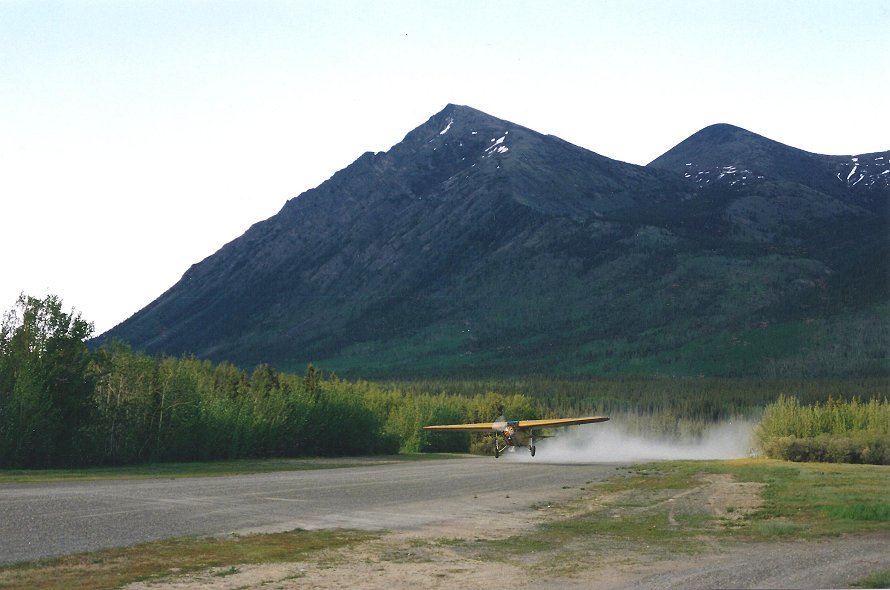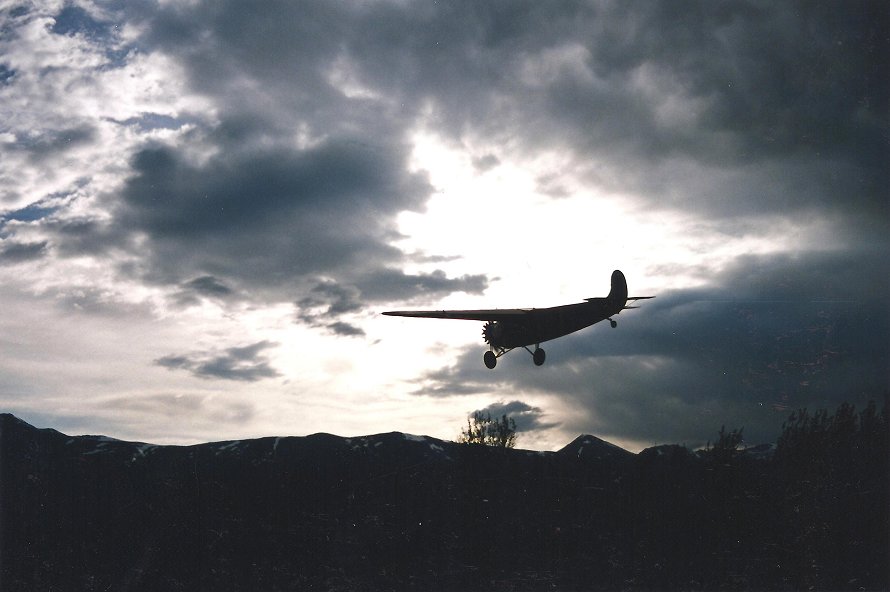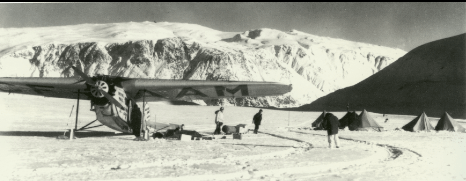Crew: 1or 2
Capacity: 6 passengers or 600 kg of cargo
Length: 11.25m (36 ft 11 in)
Wingspan: 15.44m (50 ft 8 in)
Height: 2.77m (9 ft 1in)
Wing Area: 34.3 m sq (370 ft sq)
Weight: 1,474 kg (3,250 lbs)
Loaded: 2,517 kg (5,550 lbs)
Useful Load: approx 1,000 kg (2,200 lbs)
Powerplant: 1 x Pratt and Whitney Wasp engine, 450 hp
Maximum Speed: (with wheels) 218 kph (136 mph)
Range: max range 1,120 km (700 mi)
Service ceiling: 5,900 m (19, 340 ft)
Yukon Companies: Northern Airways
Yukon Pilots: George Simmons, Everett Wasson, Bob Randall, Lionel Vines, Leslie Cook, Doug MacDonald
The early years of aviation in the Yukon were a tremendously competitive time. With companies employing a war over wages. Known as “The Rate War,” companies would undercut their own business so that their competitors had no choice but to also lose money. In these competitive times a competitive aircraft was needed. Enter the Fokker Super Universal.
The Fokker Super Universal was the weapon of choice for Northern Airways during the 1930s “Rate War”. The Super Universal was well handling, with a large payload, and was tough enough to survive the primitive and scratched out runways in the North. However, like many of these pre-war pioneers, their reign was relatively short lived in comparison to the likes of the Beaver and other post-war aircraft.
On December 5, 1937, the Northern Airways Fokker Super Universal CF-AAM was involved in an accident during take off leaving Dawson. The pilot, Leslie Cook, 6 passengers, and the Super Universal suffered minor damage. Surprisingly, the aircraft was deemed a write-off, despite having been overhauled just 3 months previous in Vancouver. The Fokker Super Universals role in the “rate war” was over.
CF-AAM´s story would not die out at the end of the Dawson runway, however. Although the aircraft was stripped and left to rot at the end of the runway for 40 years, it would not be the aircrafts final resting place. The Super Universal CF-AAM would rise like a phoenix, being restored over the course of 18 years by a team of volunteers. CF-AAM was rebuilt with the wreckage of two other Super Universals that were crashed in the Yukon. Parts from an American Super Universal was also used. After 18 years of hard work and 10,000 hours of labour from volunteers, CF-AAM was complete and airworthy. On July 24, 1998, after 61 years, the proud yellow and green Fokker Super Universal rose into the air again.
CF-AAM would then spend the next six years touring across Canada, winning many awards at airshows along the way. It would eventually come back home to the Yukon, stopping in its former base at Carcross, and perhaps most importantly, redeeming itself by taking off incident free out of Dawson; the place that had been its resting stop for some 40 years. CF-AAM now resides in the Royal Aviation Museum of Western Canada in Winnipeg Manitoba.
Yukon Transportation Museum does not own these images and is only using them to illustrate the history of these aircraft.



